It is about where wild nature and farming activities meet and collaborate to create mutual sustainability.
It is also about the generous natural environment.
We, the whole family, are farmers. Even though we have other jobs besides that, we still farm. Because we are a family of farmers, sons and daughters of a farmer, son of a farmer, son of a farmer. The land that we cultivate, both rice fields and gardens, is land that has been cultivated by our ancestors hundreds of years ago. I don't know if it might have been since prehistoric times! But archaeologists are said to have found stone tools (artifacts) for farming called Sumatraliths.
The neighborhood that I will show you only a few of here is one corner of our "oîkos" (ancient Greek for house). The land and the environment have supported our life and sustainability. Its air is our breath as well as our soul. So no matter how it looks, it is the "oîkos" around which our lives are built.
I'll take you to look at some of the parts.

Bicycles like in the picture above are commonly used by farmers when going to their farms, to the fields or to the gardens.
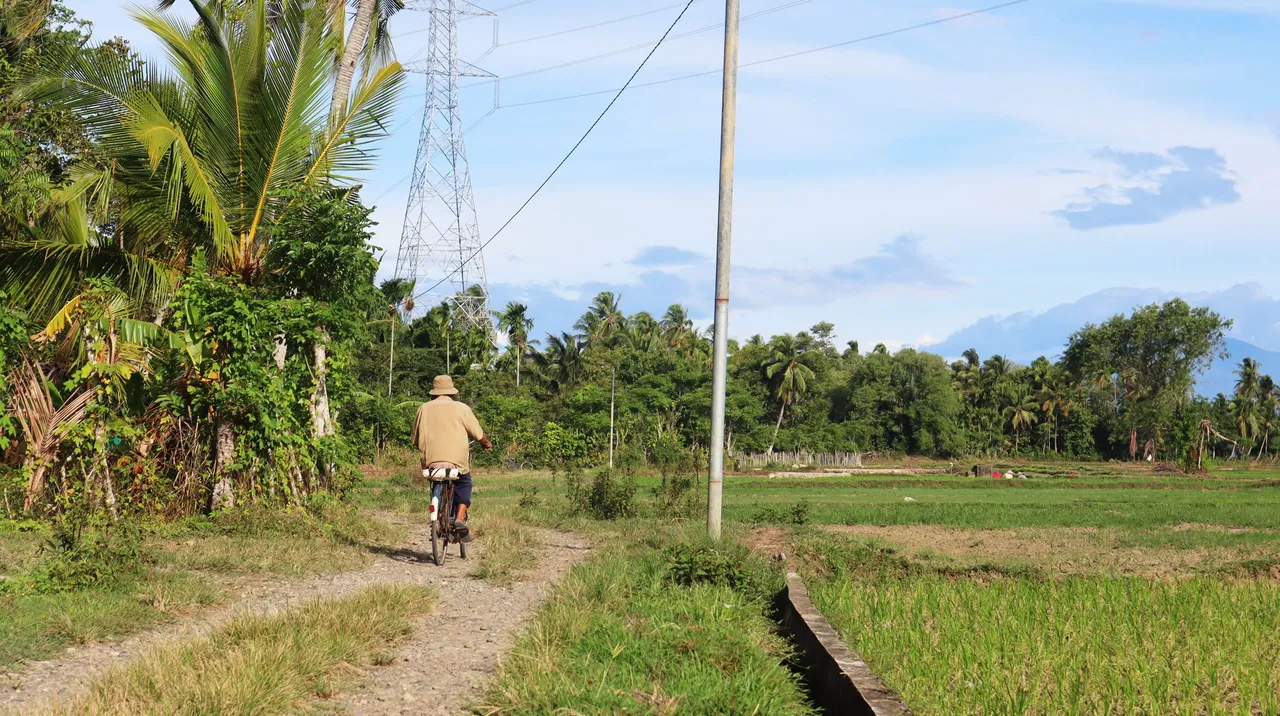

But I will not show you the rice fields. I want to invite you to enter a heterogeneous vegetation area. For just a few minutes through the footpath there.
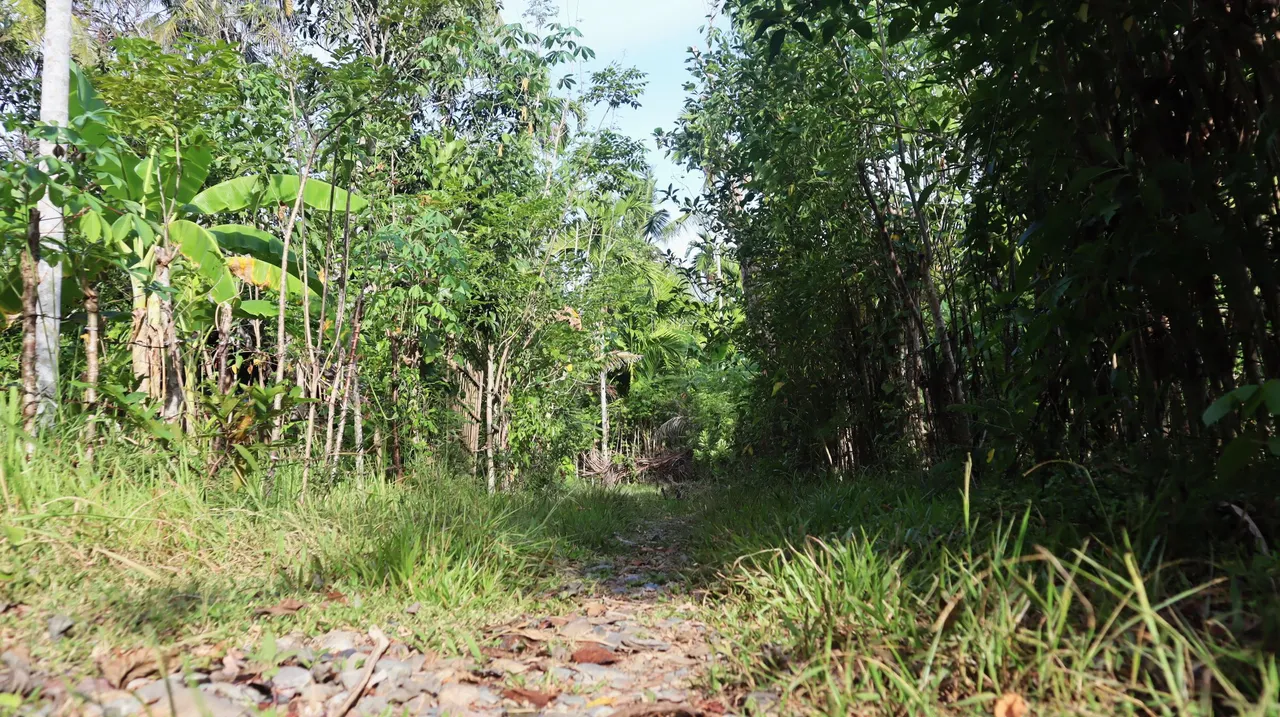
This is the beginning of the pathway into the area. There are many pathways like this where one goes from the rice fields to gardens that look like small forests. This pathway is a small gravel road overgrown with grass here and there.
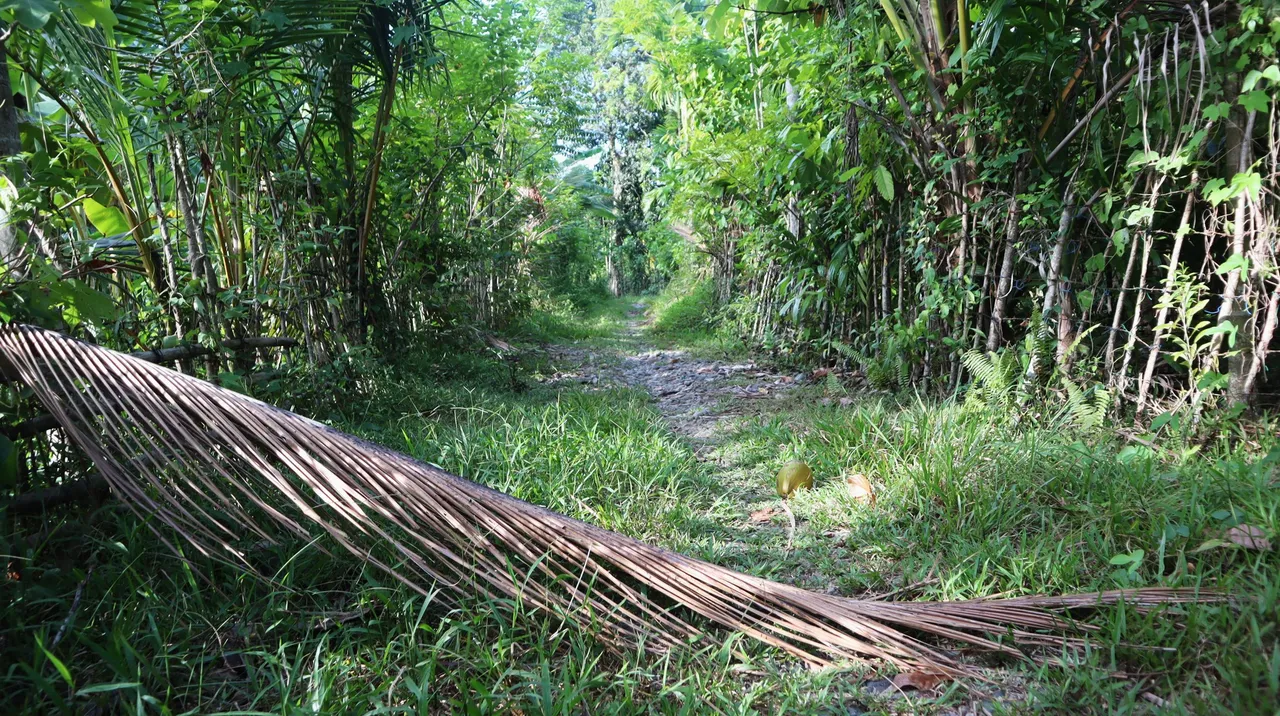
It's the dry coconut frond that fell from the tree. It crosses the path. But later, I'm sure, it will be taken by anyone to be used as a fireplace material in cow or goat pens, or for firewood, or taken for sticks after cleaning the dry leaves to then be collected and tied together and become a broom to clean the yard. . We have experience with these coconut fronds since childhood, and love the smell of smoke from the fronds when they are burned. It's smell also gives a comfortable feeling from mosquito disturbance.
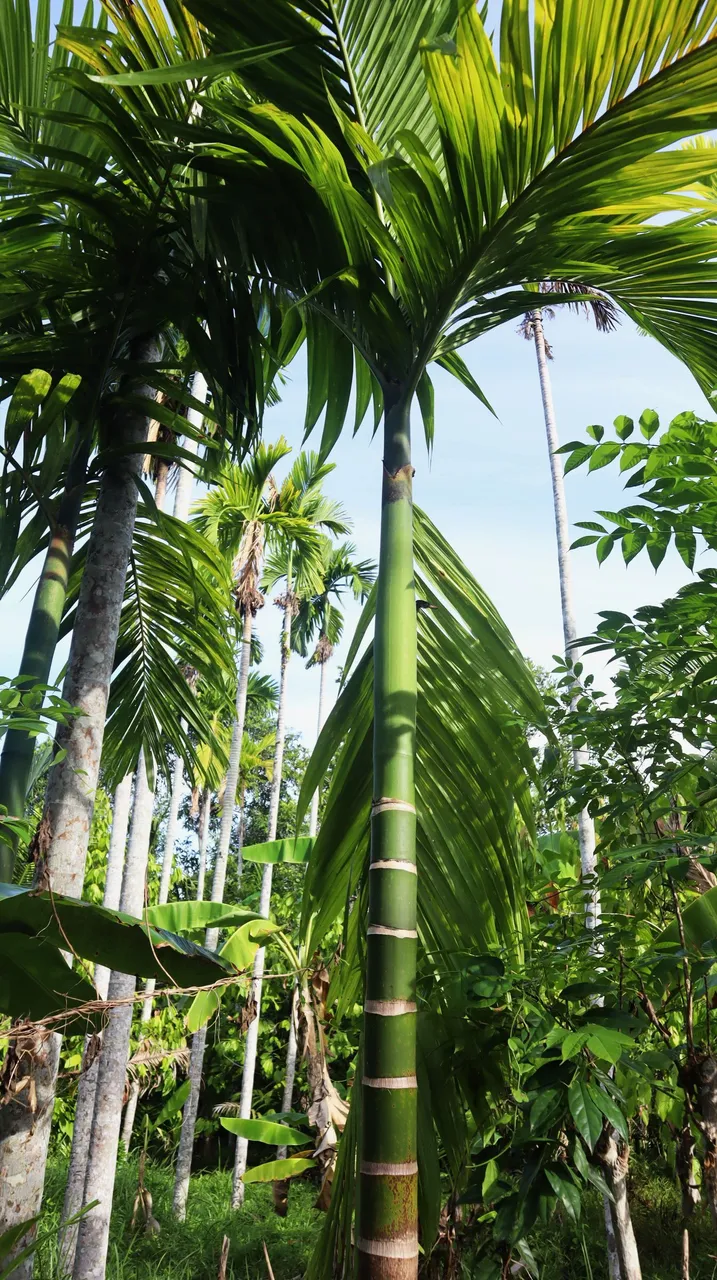
Areca palm. Areca nut is a natural product that has important economic value here. It has been a source of income for the villagers for a long time. It is also one of the export commodities from this area. Villagers, like us, have been working on that income since childhood. Ripe areca fruit is picked, then dried until completely dry, and ready to be split open to extract the hard seeds. When we were small, we worked splitting areca nuts and were paid by our grandparents. The money is enough to buy snacks and sometimes other costs.
Not long after that through the pathway, on the left, we can see a wooden structure on the lower terrace which is the riverbank. The structure looked closed from all sides, because it was actually a bull stable. In that pen there can be one to three very pampered bulls. The feed, which is fresh green grass and also juicy banana stalks, is specially served for the bulls. Even their psyche also get treatment. They were kept from being startled, and because of that their cages were closed from everything so they wouldn't see anything that depressed them, which in effect, reduced their meat weight. Only their owner can enter the stable. So, I can't invite you to look there, and we keep moving forward.
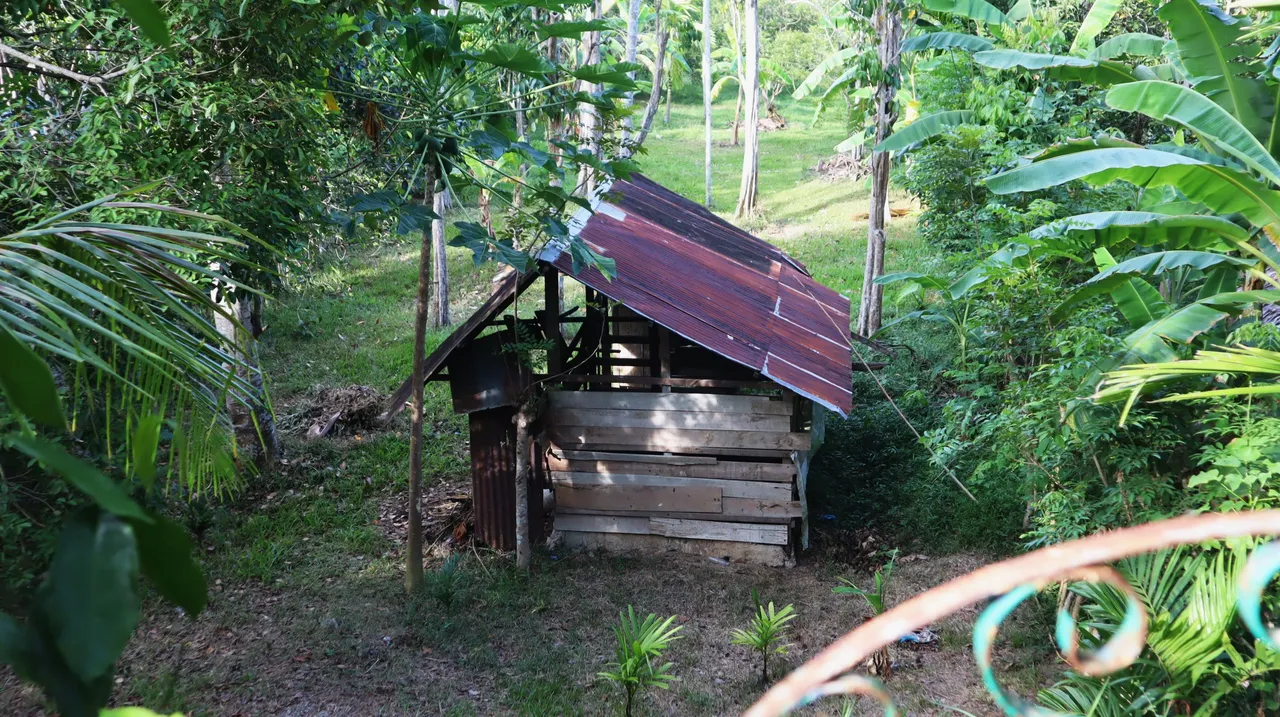
Here's another one.
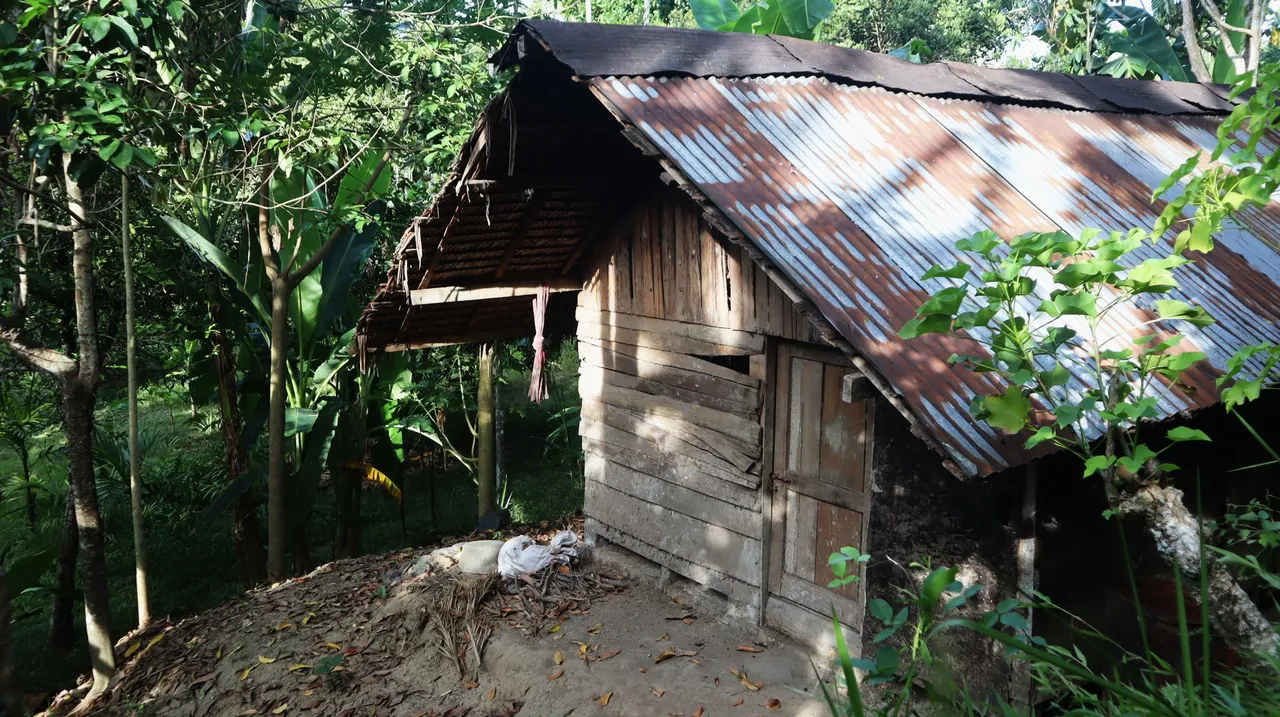
But ahead, the path is almost covered with grass. Passers in this area are of course very rare, so the trails sometimes only leave marks.

Stepping on this path, you will notice the insects like in the picture below, jumping along with your steps. They don't move away, but just jump around you. For children, it will be very exhilarating. They would catch the insects, put them in a bag or bottle and bring them home to feed the hens. Chickens really like the protein that comes from the insects. Maybe you also have the same experience in this matter.
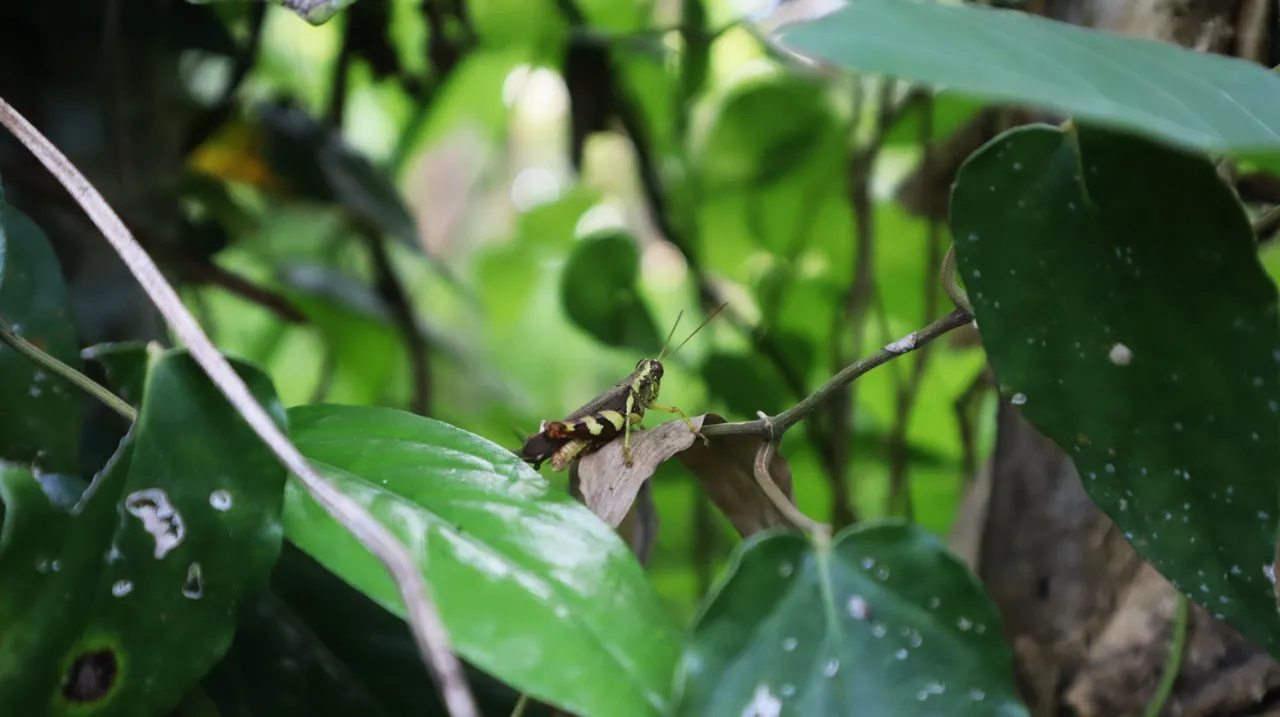
This green environment is of course "paradise" for various species of insects. The food chain also moves dynamically there, albeit silently and almost imperceptibly among various insects, reptiles (most commonly, lizards), rodents, and birds. It's an amazing, well-controlled balance in the hands of nature.
You see a small insect perched on a leaf. It was a baby mantis (praying mantis). That, perhaps, is practicing the skill of observing the surroundings.
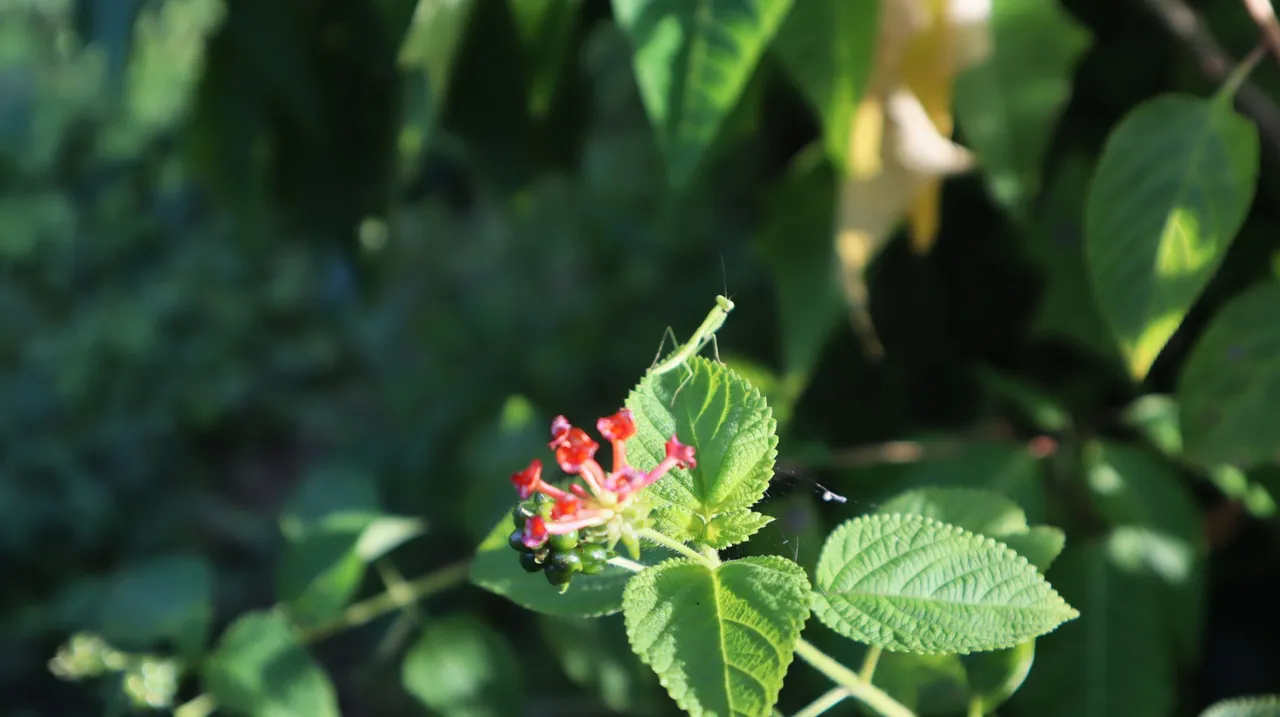

You also see a jewel beetle (wood boring types) in the opposite direction to the pea eggplant (Solanum torvum) which can grow anywhere here. Is that jewel beetle checking the boring point over there? May be!
Closer.
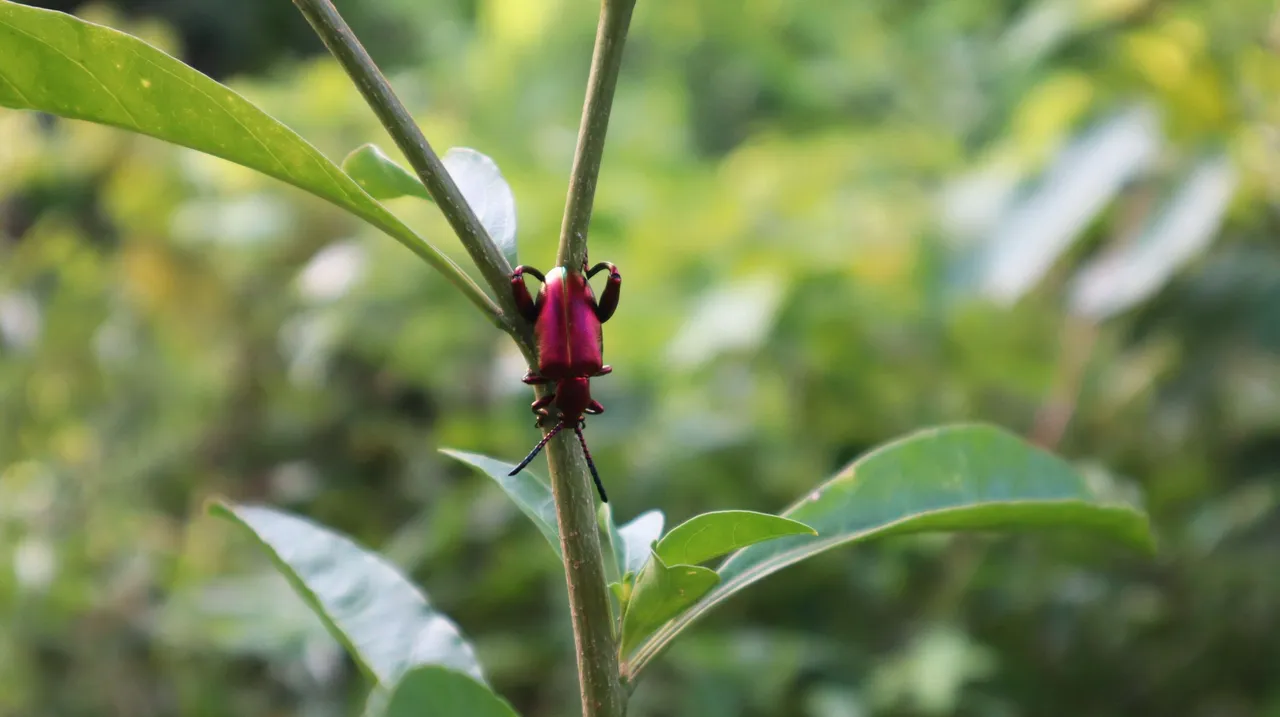
Along that small path, we will also usually see berries popping up on either side. It is a berry of various shrubs. Berries are not consumed by humans. Only certain types are edible. The berries are a diet for birds and sucking insects such as moths and bugs.
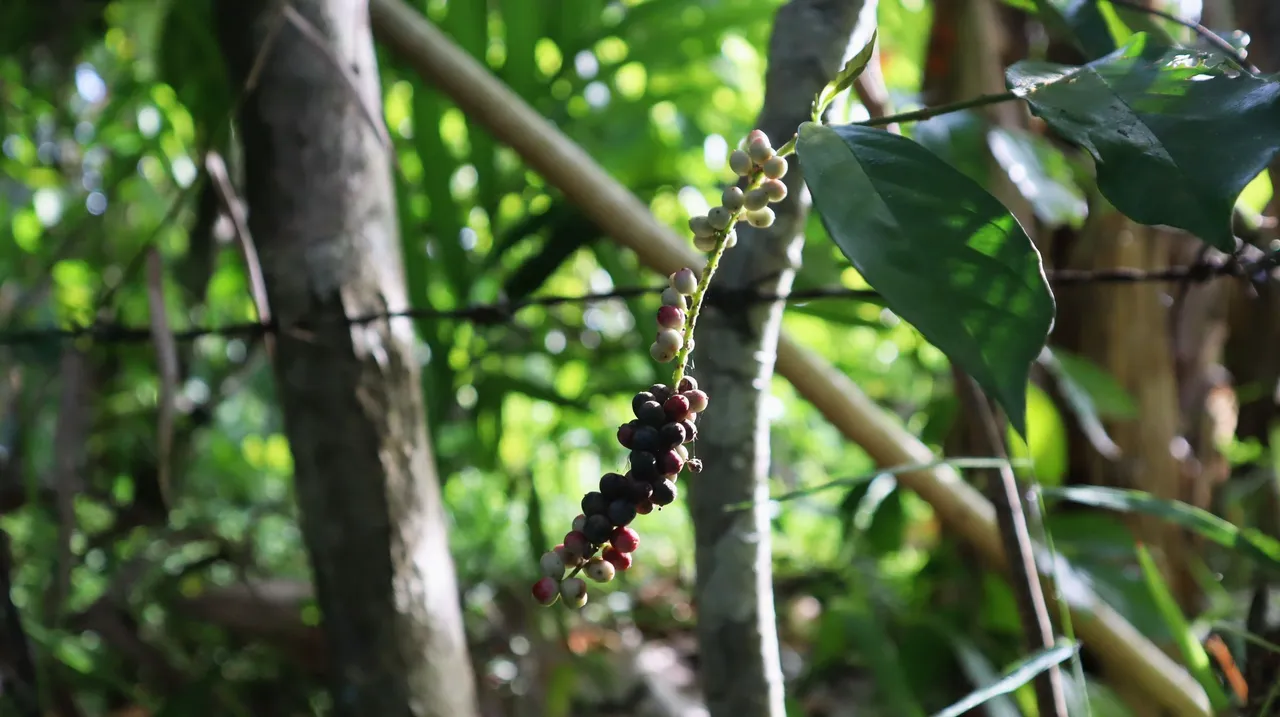
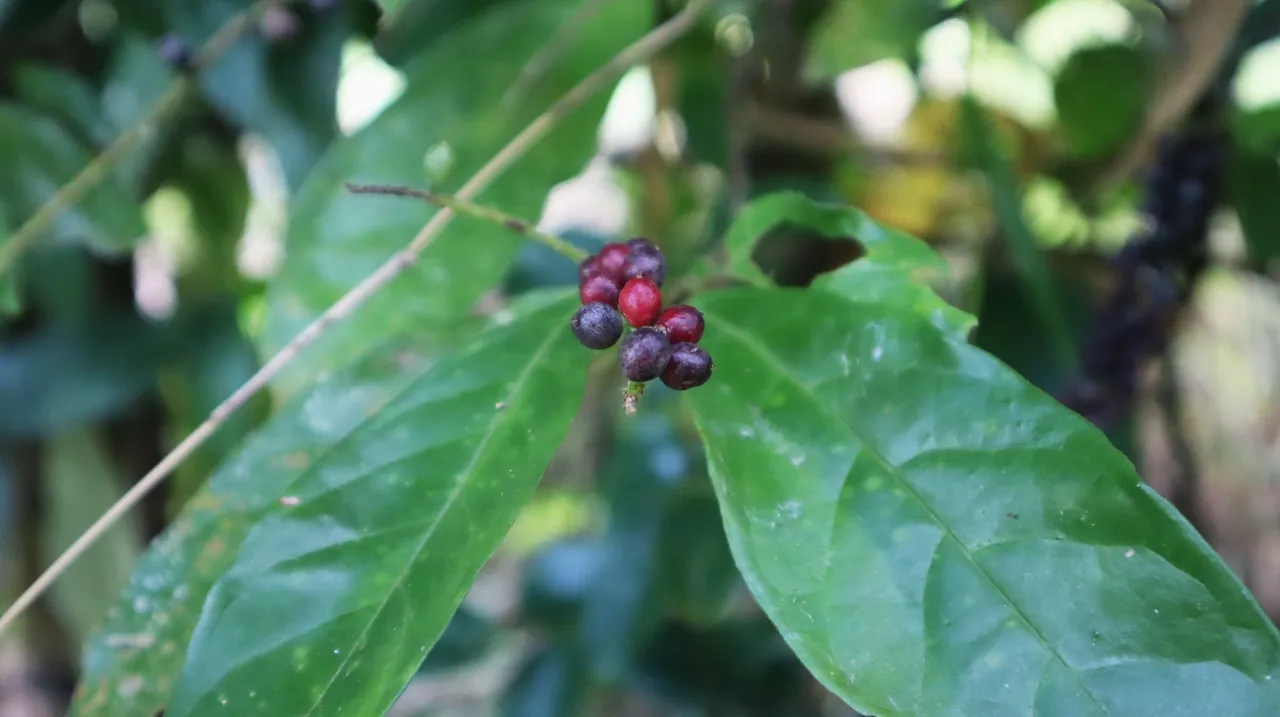
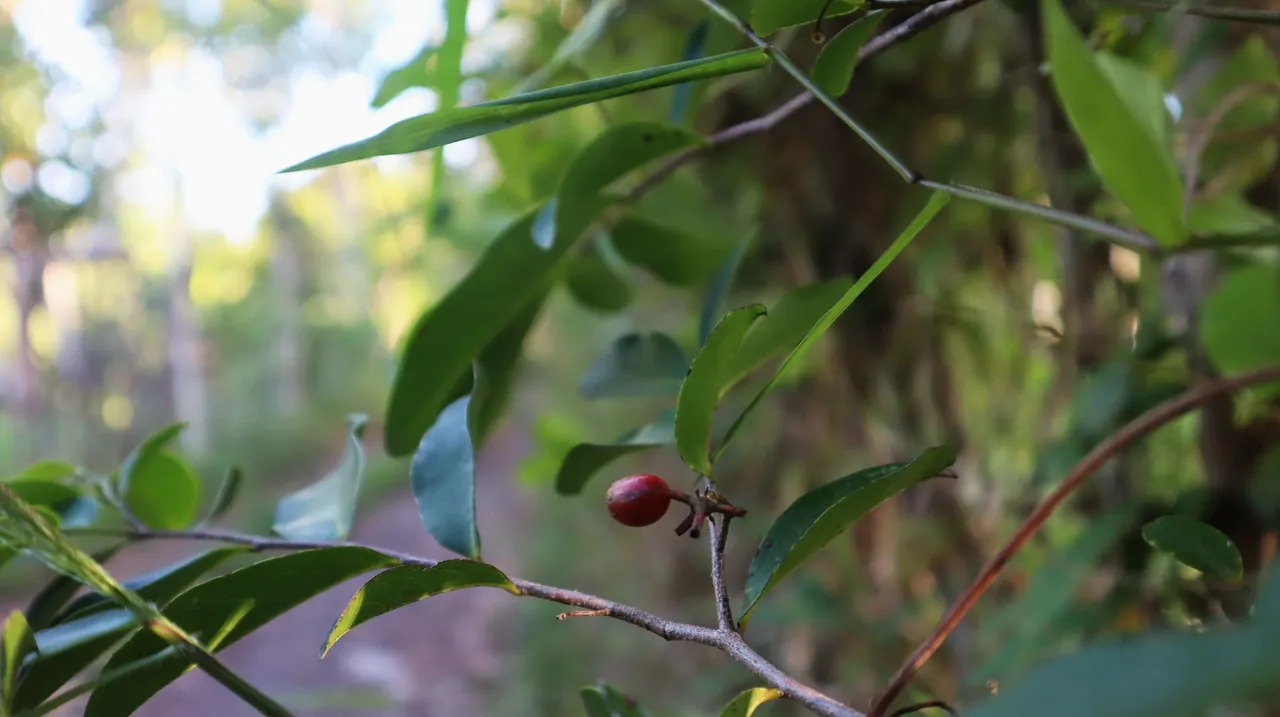
Shrubs not only provide food for the animals that serve the ecosystem, they are also useful for farmers. Shrubs are allowed to grow, in fact, they are also often planted to fence off orchards to keep the fruit trees in them. Shrubs are also useful for firewood which is still commonly used by farmers to conserve the use of fossil fuels for household purposes. We can also see here, small wood obtained from bushes is also used to make fences and gates which are quite artistic as in the picture below.
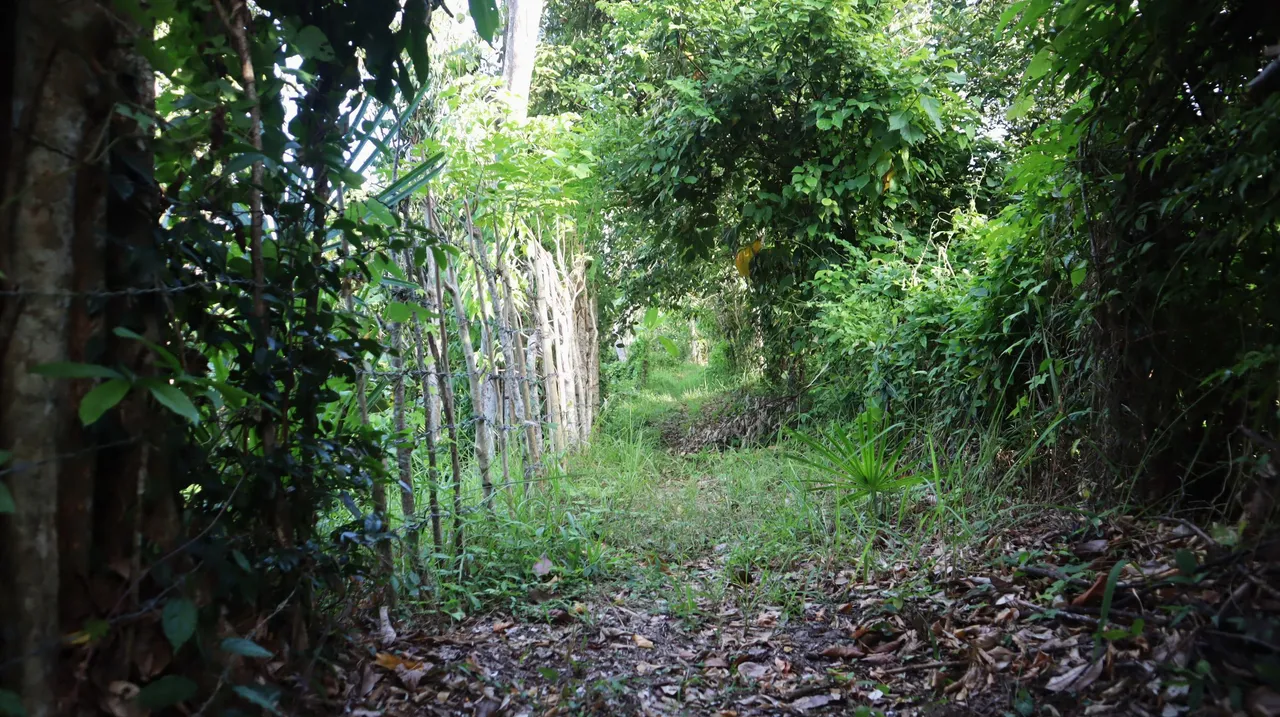
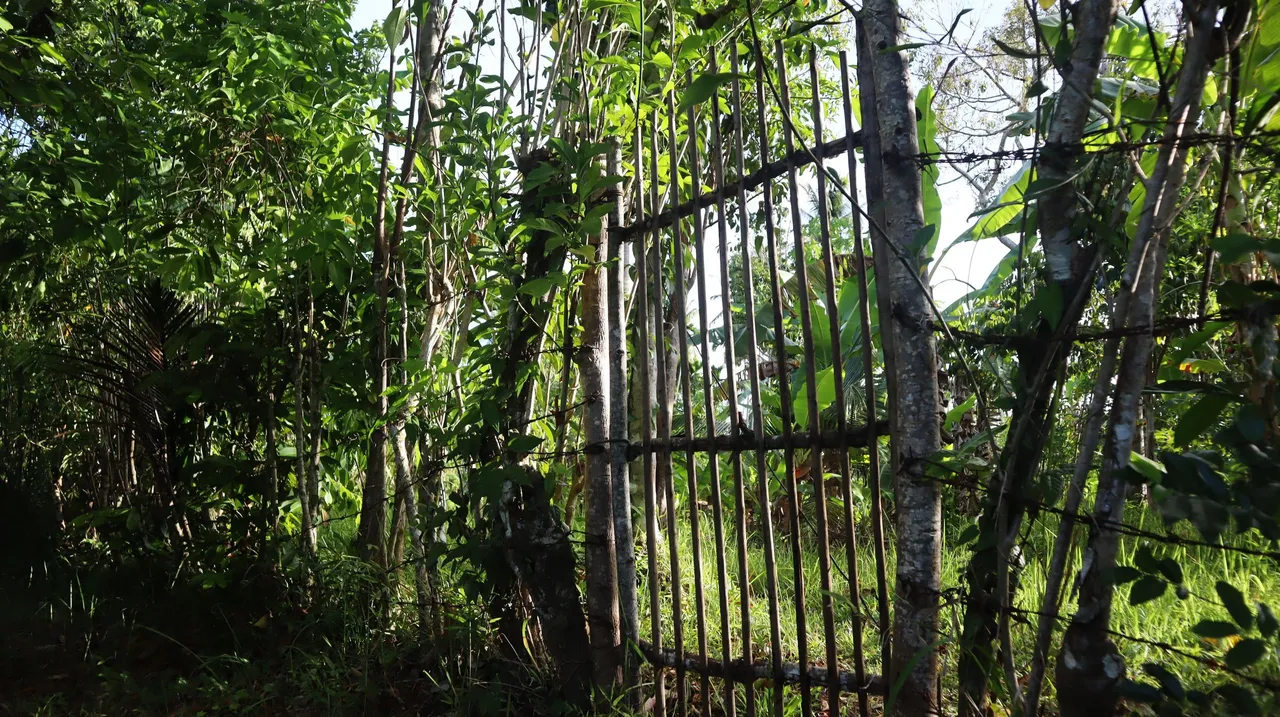
But not everything that looks like bushes, it's all bushes.

Among them, there are vines that are cultivated and have high economic value. This vine is known as Javanese long pepper (Piper retrofractum) which has many benefits. It vines in trees as shown below.
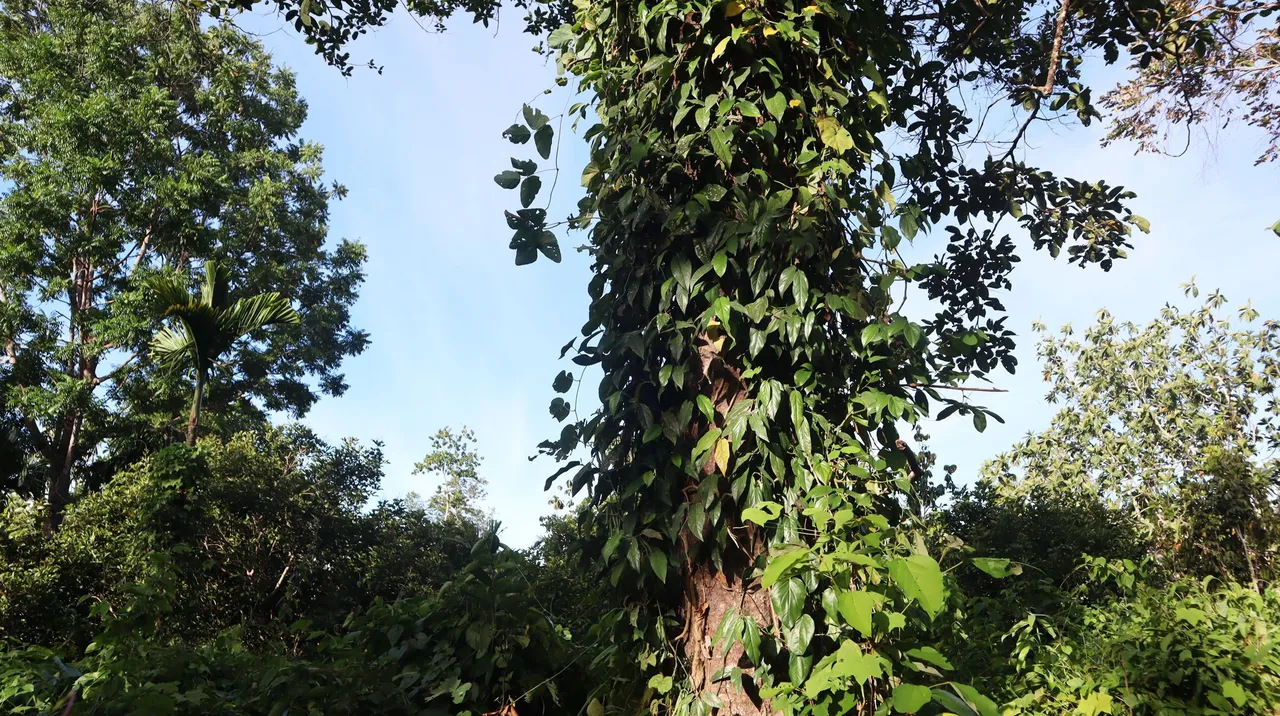
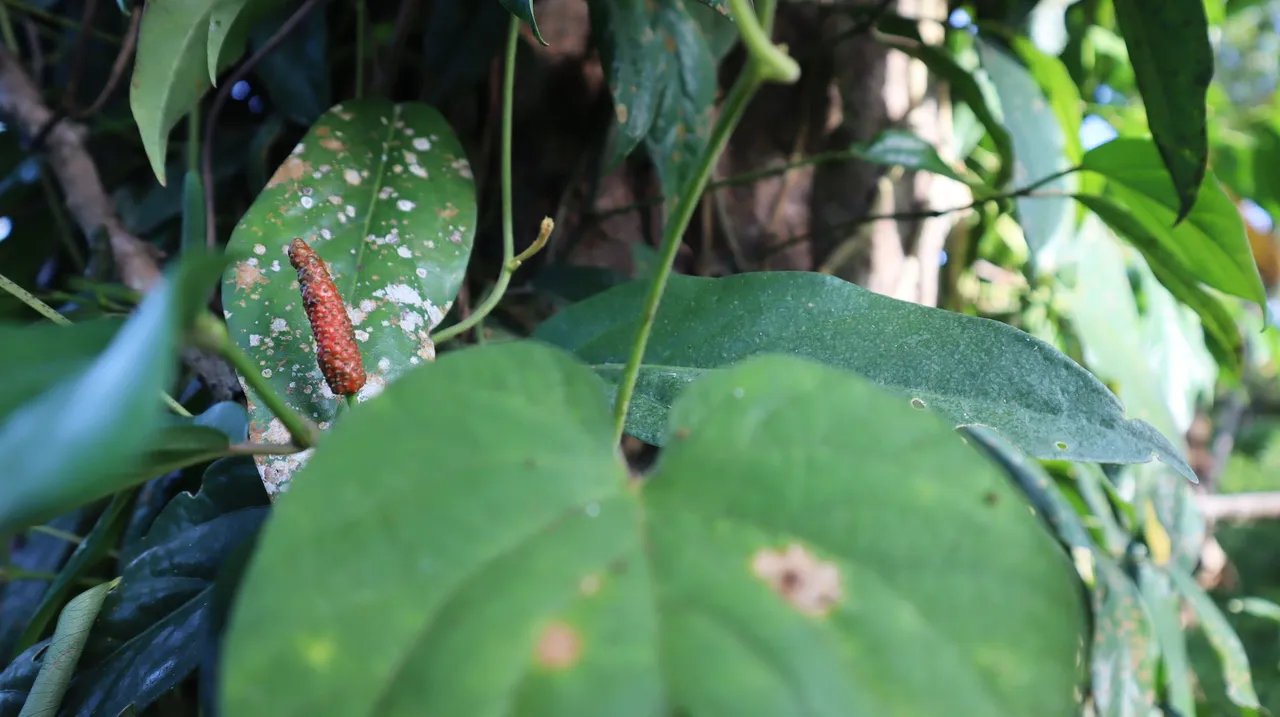
So, this area is certainly not a garden as it is commonly understood. That is, it is not just land for cultivated plants such as vegetables and fruits, but rather gardens with the appearance of a forest, or a kind of residential forest that provides various types of human needs. It is about where wild nature and farming activities meet and collaborate to create mutual sustainability. It is also about the generous natural environment.

Its heterogeneous can be seen from the various types of vegetation, from vines and shrubs to large tall trees which can later be used for various constructions.
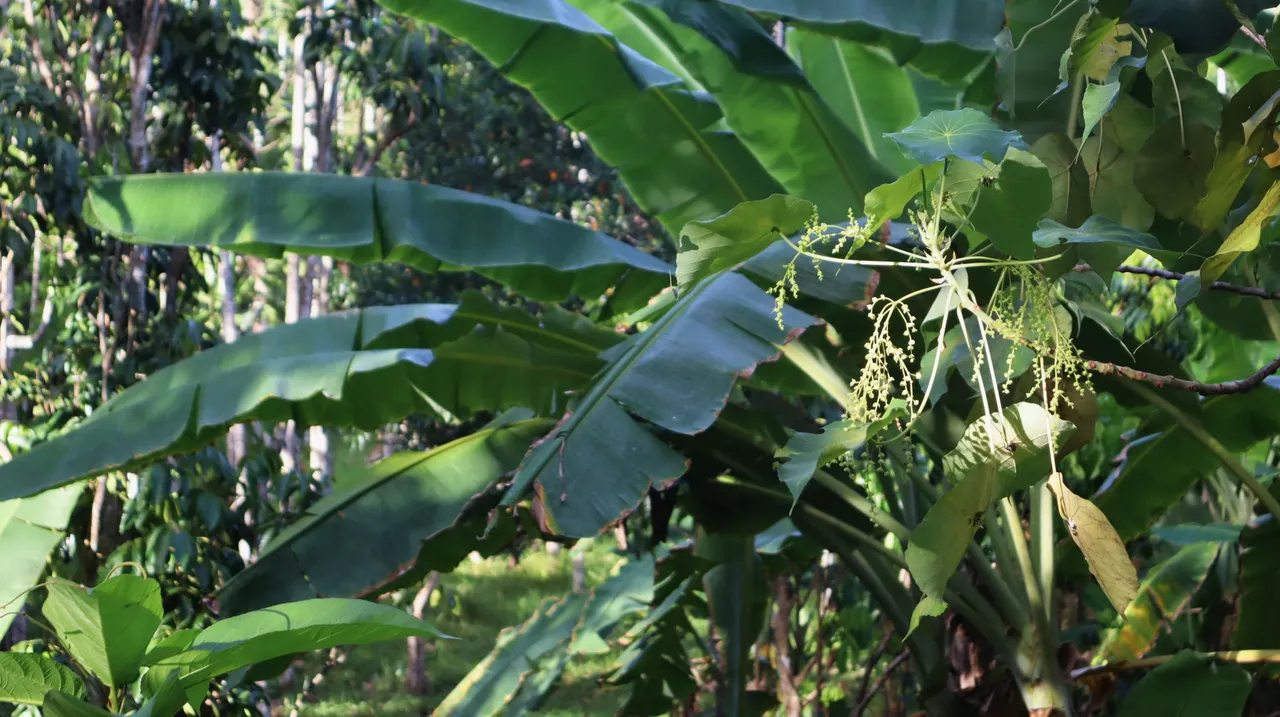
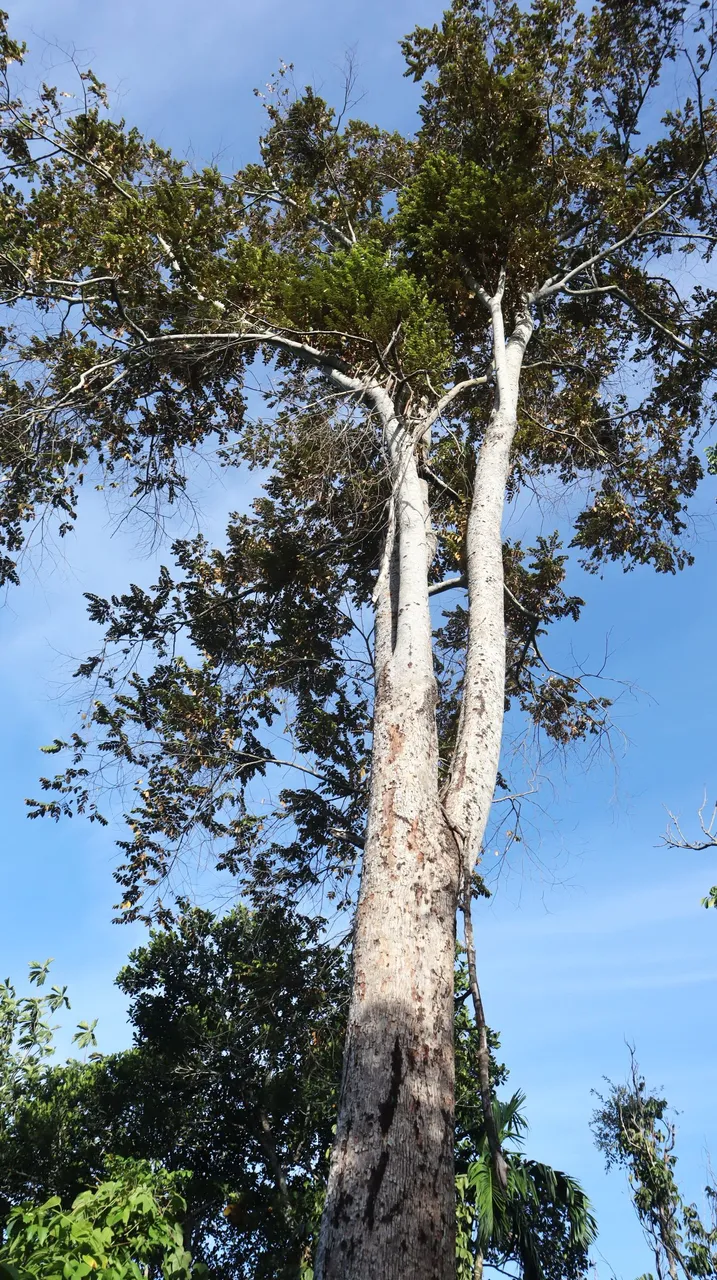
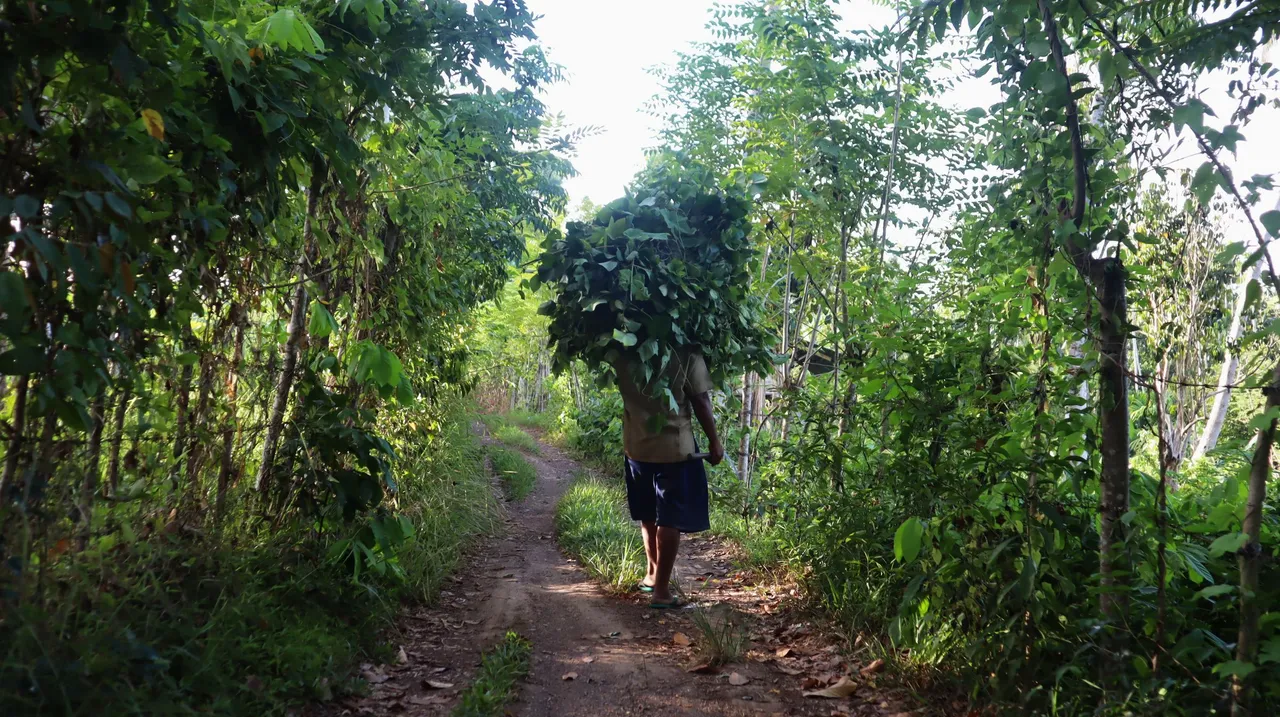
On that path, we can meet people who are bringing home feed for their livestock. Several types of vines (or shrubs) are useful for feeding the goats.
After passing the person in the picture, I think we can end our trip here. I think you have seen one side of my "oîkos", the natural environment in which we live, where the wildness of nature must be maintained to support sustainability. That's what we inherited from our ancestors who live in this place.
And this is our ancestral grave from 500 years ago.
